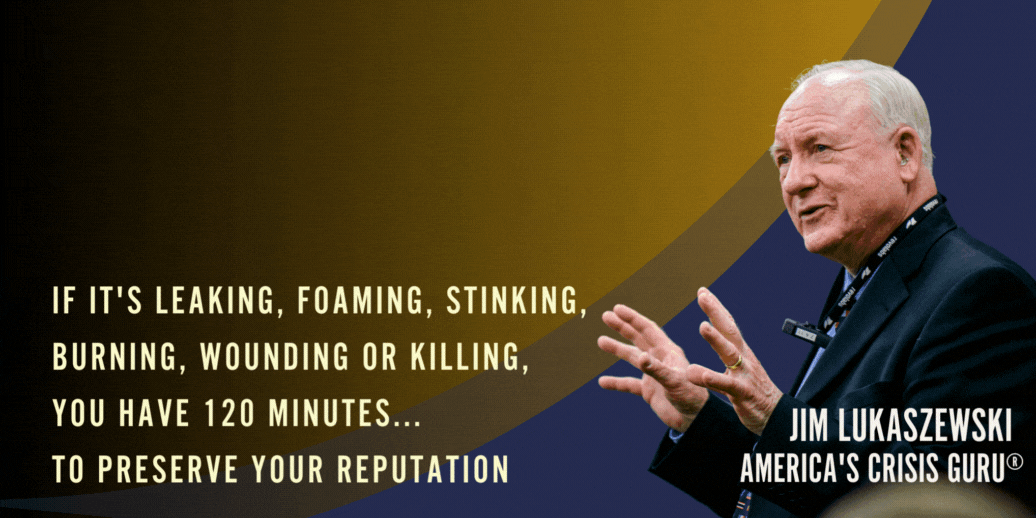What is the best response to a crisis? While you may require some time to understand what is going on you can immediately implement a strategic five-step first response. I referred to this as The Golden Hour Strategy because the intention is to launch all five steps within the first 60-120 minutes of the crisis incident, whatever the crisis happens to be.
The Steps
- 1. Stop the production of victims. Continuous victim production is what drives the media coverage, the public interest, the emotionalization, the commentary and criticism from 1000 different sources focused on reputation destruction.
- Manage the victim dimension. This is what leaders and senior managers should be doing rather than hanging around and second-guessing the command center.
- Communicate directly and frequently with employees, stakeholders, victims, survivors, and those directly affected. Calm and settle people down.
- Notify those indirectly affected, those who have a problem now because you have a problem; regulators, licensing authorities, neighbors, partners, collaborators, key stakeholders, those who need to know and who should hear from you very promptly.
- Manage the self-appointed and the self-anointed; the news media and the new media, those who opt in on their own, the critics, the bellyachers, the backbench bickerers, the bloviators. This is the strategy management needs to help all responders focus on what matters most and first. Far too many response plans have only legacy media public relations driven tactics. Crisis response is a management responsibility driven by a simple, sensible, constructive, positive, and clearly achievable strategy. The strategy needs to be productive, capable of being managed and led successfully by leaders and managers.
The Golden Hour Metaphor
The first hour or two of crisis situations I often refer to as the Golden Hour (or hours). The phrase comes from military medicine at the close of World War II, and during the Korean conflict. Military medical studies of combat deaths by the Army Medical Corp indicated that the single most prevalent cause of death for wounded soldiers was blood loss–the failure to get these individuals into serious life-saving medical treatment quickly after being wounded. They were bleeding to death in the Jeeps, trucks, and other vehicles driving them to the hospitals located in rear areas of the battlefield.
The helicopter, which was brought into wider military use following World War II, was the perfect vehicle to get wounded soldiers quickly off the battlefield. But one more critical component was needed. Surgical facilities had to be as close as possible to the battle lines to further reduce the risks and damage associated with transporting the wounded to urgent care.
The U.S. Army Medical Corp came up with the mobile hospital concept, the Mobile Army Surgical Hospital, or MASH, portable fully equipped surgical suites staffed by some of the brightest surgeons in medicine, just like the television show. These mobile facilities were located on the battle line and moved with the progress of the battle.
Here’s the point, 96% of wounded soldiers who arrived alive at a MASH left the MASH alive.
To me, this is the perfect metaphor to address what management must be ready to accomplish in those first 60 to 120 dangerous and chaotic minutes of a crisis.
Some scenarios may require helicopters, but they are very complicated to use. Learn special safety requirements needed to use helicopters in appropriate emergency responses.


